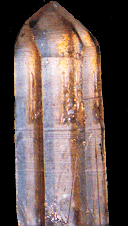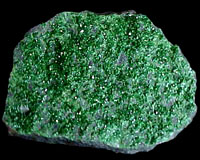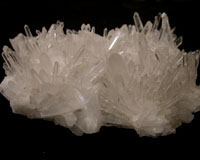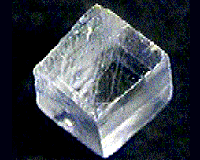










|
Geology-Bits |
 |
Geobits includes an assortment of geological items that are posted periodically. |
|
| This issue of GEOBITS of hardness, Jade is contributed by Mr. William Chow;Garnet and Quartz Varieties is contributed by Dr. L.S Chan. For more information,follow the links to the pages for details of each topic. |
|
| GEOBITS of Jade: |
|
Jade is popular among Chinese. In gemmology, however, only two minerals are recognised as jade: nephrite and jadeite. Many jades sold on the market are treated to enhance their beauty. The tests described here are by no means exclusive but are some of the common means for differentiating various kinds of jade.
Mass of prismatic bluish green colored Johannsenite crystals. N'Chwaning Mine, Kalahari Manganese Field, Northern Cape Province, South Africa.
Click to the LINK for more detail on Jade. |
Jade crystals
7.2 x 4 cm.
Photo by John Veevaert
Source: http://webmineral.com/specimensG.shtml |
|
|
| GEOBITS of Garnets: |
 |
ome of these rare gamets are, so far, extremely rare: Majorite has only been found in meteorites, and several others have been found in just a very few locations -
Click to the LINK for more detail on Garnet
|
|
| GEOBITS of Quartzs: |
 |
How many varieties of quartz do you know? Quartz, a silica and the most common mineral, can occur in many forms. It can be ultra-fine grained (cryptocrystalline) or appears with an extraordinary colour when it contains certain elements or impurities. The charts below are some of the most common varieties of quartz. Some high-pressure forms of quartz such as coesite and stishovite are rare in nature and high-temperature forms such as tridymite and cristobalite can be identified only with a microscope.
Click to the LINK for more detail on Quartz Varieties. |
 |
Mohs’Hardness Scale is a useful mean for mineral identification in field. Although it cannot determine the absolute value of hardness of individual minerals, the principle of comparing soft and hard materials helps to eliminate many possibilities of like minerals. Field geologists always carry a hardness box in work. Do you want to get one, in Do-It-Yourself way
Click to the LINK for more detail on "Hardness Box DIY"
Source:http://realgar.mcli.dist.maricopa.edu/aaim/linear/calcite.gif |
|
For any enquiry and suggestion, please mail to Webmaster.
|
|












